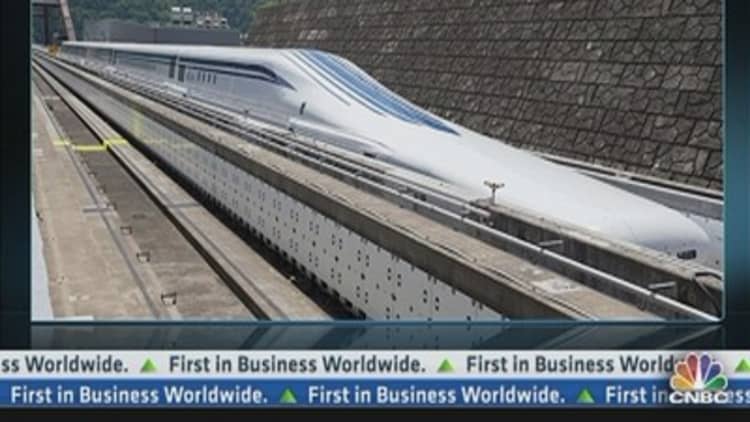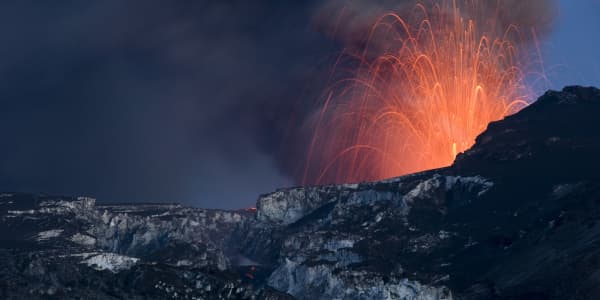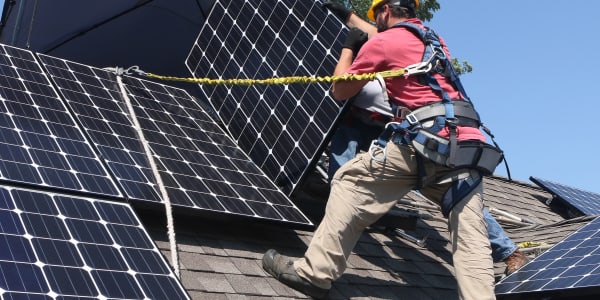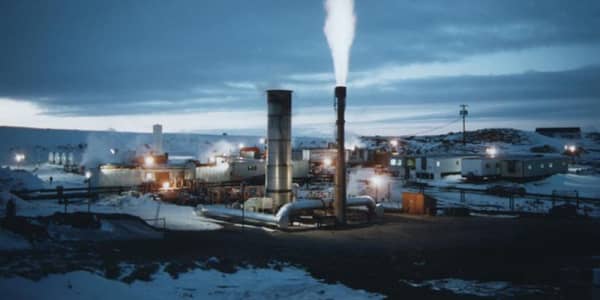Amtrak, you could say, is an aging railroad looking for a magic pill that can get its infrastructure juiced up enough so it can handle the fastest new things on the market.
Created by Congress in 1970 from the remnants of failing private passenger train lines, Amtrak remains saddled with failing, high-maintenance infrastructure as it tries to build for a higher-speed, tech-friendly, urban-fueled future that has already arrived in other parts of the world.
Even its most successful segment, the Northeast Corridor, is vulnerable to outages at several chokepoints, adding to a system-wide on-time performance that slipped to 70 percent as of June. Cross-country long-distance routes are on time only 41 percent of the time.
The railroad keeps running only with large cash infusions from Congress and other sources, its attempts at Wi-Fi have been met with much mocking from passengers, and yet despite all that, ridership is at record levels. To be successful, the future will come with a big price tag, as aging infrastructure reaches its breaking point, and passenger revenue alone can't foot the bill. For fiscal year 2015, Amtrak requested $1.62 billion in federal capital andoperating funds, a 16 percent increase from a year ago.
"Just like the interstate highway system 60 years ago and the transcontinental railroad 140 years ago, high-speed rail is about how we imagine ourselves as a nation," said Allen Batteau, a Wayne State University cultural anthropologist who is working on a study of high-speed rail in the United States.
"Are we a nation or are we 50 separate states? Do we have something in common that leads us to connect up? Looking at every one of these systems, whether it's the transcontinental railway or the promotion of aviation, it was all about building a nation. And high-speed rail, like aviation, has this cachet of the future. A bullet train, it's cool, it's fast, it's futuristic," Batteau said.
"The whole question as a nation is: What are we going to invest in?"
Tracking the future
Joseph Boardman, Amtrak's president and CEO since 2008, is optimistic new technology will come to the railroad. "We have a plan for that, and I think we will get it funded," he said.
However, he told CNBC, "I don't see it getting filled with U.S. investment." Funding may instead come from sovereign wealth funds elsewhere in the world, such as Norway, China or Abu Dhabi, Boardman said.
"We're going to have three-hour service between Boston and D.C.," he said, forecasting that trains in the U.S. might reach not just the global standard of 220 miles per hour for high-speed rail, but even 300 miles per hour.
"Twenty-five years from now, I can't imagine we'll still be operating at 220 [miles per hour]," Boardman said.\
Read MoreWhy America has a shortage of truck drivers
But getting to 220 miles per hour is a tough goal, considering it's increasingly difficult to keep Amtrak's existing trains running on time.
"If we don't get two new tunnels in New York in the next dozen years, we're going to have major problems," Boardman said.
The current rail tubes under the Hudson River leading to Manhattan were thought to have a lifespan of about 20 more years, but damage from Hurricane Sandy is worse than feared, as erosion to wires and concrete accelerates. Closing even one of the 3-mile long tunnels will mean reducing the current capacity of 26 trains per hour to only six.
Read MoreClock ticking on tunnels at major rail artery, Amtrak warns
The last plan to build new tunnels under the Hudson was killed in 2010 by New Jersey Gov. Chris Christie, who said rising costs made it too expensive for the state to fund. While the threat of losing Hudson River access is the primary worry, Amtrak's currently proposed Gateway Project calls for a complete upgrade of the Northeast Corridor with faster trains, updated stations, new bridges and other infrastructure to support faster service.
In Trenton, New Jersey, Amtrak is rolling out what is billed as a practical prototype for Amtrak's future. The $450 million project will increase maximum speeds on the 23-mile corridor between Trenton and New Brunswick to 160 miles per hour from 135 miles per hour, but more importantly, will reduce down time on both Amtrak and New Jersey Transit service caused by downed wires and other maintenance issues.
The project will be complete by June 2017, with only 23 miles of the full 456-mile Northeast Corridor upgraded. Officials emphasized it is an example of what Amtrak could do with dedicated, multi-year funding, which President Barack Obama has called for under his $302 billion Grow America transportation proposal.
"This is the type of work that has to be done on the entire Northeast Corridor," said Joseph Szabo, administrator of the Federal Railroad Administration. "Unless Congress passes more than a short-term funding patch, we can't do more."
"This is one of the most productive regions of the globe, this is pay dirt," New Jersey Senator Cory Booker said earlier this month during a tour of the warehouse storing the all-American made equipment for the prototype project. "This is the American version of probably one of the most highly profitable, high-growth potential areas on the planet Earth and we are choking it right now, choking it because we are failing to keep up with the demand and the opportunity of the future."
If service were to freeze on the corridor, the economic loss to the country would reach $100 million per day, Szabo said.
"For the next three years, we'll be taking one track out of service [reducing capacity by 25 percent] for extended periods of time to allow the project to proceed," Amtrak spokesman Craig Schulz said.
"The Northeast Corridor is the most important passenger railroad in North America," said Stephen Gardner, Amtrak's vice president for Northeast Corridor investment and infrastructure. "It's used by 2,200 trains per day,16,000 per week between Boston and D.C."
Amtrak is also moving forward by ordering up to 28 new Acela Express train sets, each offering 450 seats per train, 40 percent more. The new trains will be required to reach speeds of 160 miles per hour when delivered and have the ability to be modified to achieve faster speeds. Bids for that contract are due October 1, with the aim of putting them into service by the end of 2018, Schulz said.
Eventually those new trains could be upgraded to run on high-speed tracks. But in addition to funding, there are many obstacles to building high-speed infrastructure. Among the requirements would be acquiring the right-of-way for tracks with "minimum 3-mile radius curves vs. half-mile radius for traditional commuter rail track," for safety at higher speeds. The proposed route would arc through central Connecticut rather than parallel to existing tracks.
High-speed ambitions
Amtrak isn't the only one working on high-speed rail in the United States. Other projects include Texas Central Railway's plan to connect Dallas and Houston at speeds in excess of 200 miles per hour, linking the 240-mile route in less than 90 minutes.
On the West Coast, the California High Speed Rail Authority is forging ahead with the first segments of a project that seeks to connect San Francisco to Los Angeles in three hours with a high-speed train that would slice through the middle of the state at speeds "capable of over 200 miles per hour." The project has been in the works so long that it was promoted by California Gov. Jerry Brown during his first governorship in the 1970s.
Once the California line is built, Amtrak could become the operator of those trains. "Absolutely," Boardman said. "We hope to be involved."
High-speed service is unlikely to cannibalize regular regional routes that already run through the central San Joaquin Valley and the California coast. Much like the Acela on the East Coast, the faster, more expensive train tends to draw a different type of traveler, he said.

But even some supporters of that project remain skeptical that it will ever get built.
"I don't even think $100 billion is going to be a enough," said Frederick Gamst, a locomotive engineer and anthropologist who is co-authoring the high-speed rail report with Batteau.
In addition to the technological and funding problems, "high-speed rail" doesn't mean the same thing to everyone.
Read More
"There's a lot of confusion of what is high-speed rail, so much that we've settled on talking about higher-speed rail," Batteau said of his research report. Even in Amtrak's own reports about the existing Acela and its planned faster speeds, there is "Emerging High-Speed Rail," "High-Speed Rail Express" and "Next-Generation High-Speed Rail," the fastest of which would only reach 220 miles per hour as a maximum speed with a buildout to begin in 2025.
It's easy to see how the semantics lead to more confusion. Gamst said that where he lives on the Central California Coast, it's not uncommon to hear people say they'd prefer the high-speed project moved to the shoreline, where it would be entirely unsafe.
"The coast is very mountainous. It's would be like a roller coaster," said Gamst, noting that while people are uninformed of the basic logistics, they still like the concept of high-speed rail.
Politically, what's more likely to happen in the next 25 years is that the public and politicians will nix high-speed rail in favor of more regional and local routes, both with rail and bus service, Gamst predicted.
"We can't afford both," he said.
Who pays?
Funding for Amtrak has long been controversial, with Congress, state and regional agencies pitching in to supplement what the passengers pay. Although Boardman points out that Amtrak is already a private agency that uses outside contractors such as Aramark for food service, many politicians continue to call for the end of Amtrak, or its least-popular routes or subsidies.
Congressman John Mica, R-Fla., is one of the loudest voices calling for reforms. He wants to see Amtrak expanded, but better run. "If they are continuing on the path they are on now, with a Soviet-style system of operating, it's a pretty bleak future," he said.
Mica said high-speed rail is a huge opportunity, especially in California.
Passenger service could increase 10 times over if the operations were improved, Mica said. The Northeast Corridor, which he acknowledged needs new Hudson tunnels, has the highest potential for ridership growth, but with a 30-year plan and a $150 billion need, "they'll never get the funding," Mica said. "It needs to be a public/private partnership."
"Yes, the federal government needs to assist," Mica said, noting that would include the continuation of some subsidies.
Even with private investors and operators, the federal titles to the infrastructure would remain in public hands, Mica said.
Amtrak's relationship to its own track is indeed complicated. Most of the rail system is still owned by others, including private companies that mainly operate freight trains. But Amtrak owns 363 miles of the 456-mile Northeast Corridor. The remainder of the route is owned by the New York Metropolitan Transportation Authority; the Connecticut Department of Transportation; and the state of Massachusetts.
Amtrak also owns track in a handful of other locations, including the 60-mile Springfield Line in Connecticut; 104 miles of the Keystone Corridor in Pennsylvania; and a 96-mile segment in Michigan and Indiana.
Read MoreFewer fast-food restaurants at Penn Station
A 2013 Brookings Institution report mapped Amtrak's route-by-route losses, with only four routes (Acela Express, Northeast Regional, Washington-Lynchburg and the Adirondack) showing positive revenues. Long-distance routes such as the California Zephyr and the Southwest Chief racked up annual losses exceeding $60 million each.
Even as money-losers, there is little will to cut those services.
"The principal mission of these trains is connectivity, which is increasingly important to communities that have been losing their bus and air connections at a steady pace over the last decade," Schulz said. "Our trains connect rural communities with major metropolitan areas, and afford our passengers a wide range of destinations—a service that has become increasingly important as air and bus options have contracted in many states."
Read MoreRough road ahead for 'pension smoothing'
Amtrak's long-distance ridership since 1998 is up about 20 percent. The Brookings report noted that from 1997 to 2012, Amtrak's overall ridership was up 55 percent.
In its first full year of operations in 1972, 15.8 million passengers rode Amtrak's trains. By the end of 2013, it reached an all-time high of 31.6 million, according to Amtrak's numbers. Traffic in the most lucrative Northeast Corridor has jumped from 7.5 million passengers in fiscal year 1996 to 11.4 million in fiscal year 2013. Over that same period, ridership on the money-losing long-distance trains has increased from 3.8 million to 4.8 million.
In its most competitive region, the Northeast, Amtrak has already taken market share from the airlines, which have their own set of problems as they operate in the country's most crowded airspace. On paper, demographics seem to be on Amtrak's side, with the millennial generation reluctant to get driver's licenses and city centers regaining their panache. But without investment from somewhere, rider revenue alone won't keep the trains running on time.
—By CNBC's Amy Langfield. Follow Road Warrior on Twitter at @CNBCtravel.






